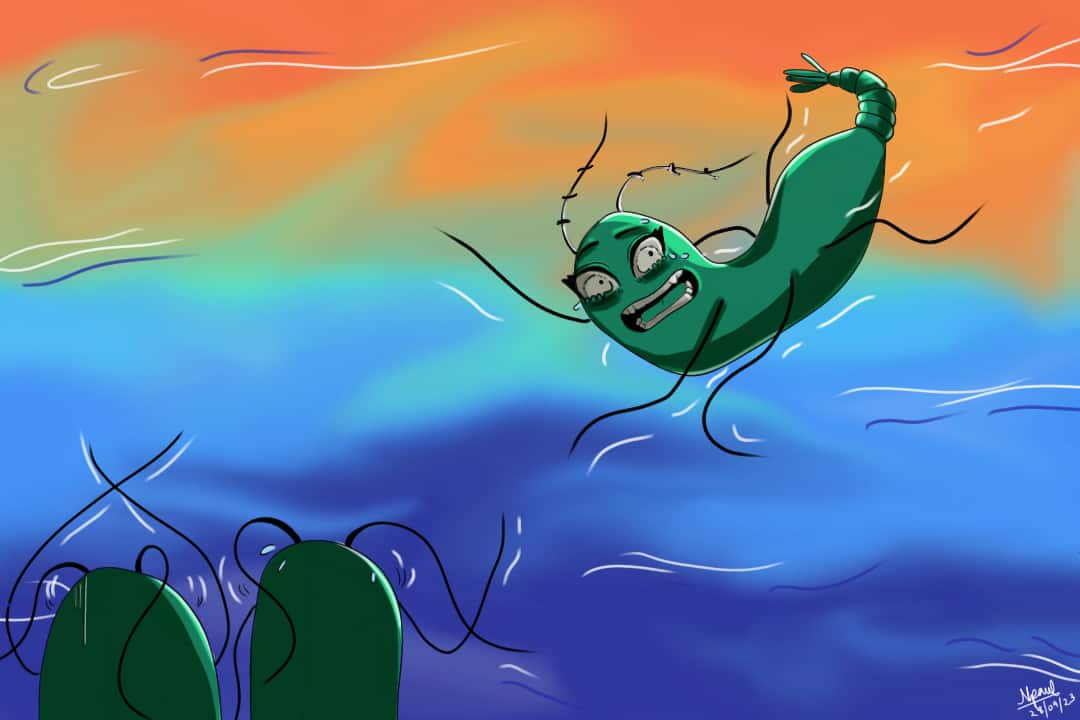Some of the most prominent impacts of climate change affect wildlife that inhabit the upper layer of the ocean — a once-thriving zone of biodiversity that is slowly dying off due to the effects of humanity’s continuous carbon emissions.
Ever since the industrial revolution, man-made carbon emissions have increased dramatically. Until recent years, this increase of carbon in the atmosphere was mitigated by the ocean absorbing a significant amount of this output. However, this has not been without consequence; carbon absorption has increased the ocean’s acidity, taking a massive toll on ocean species. Further, throughout this time, global ocean temperatures have been rising at alarming rates because atmospheric carbon dioxide traps heat, which warms up water bodies.
These effects are a problem for species that inhabit the layer closest to the surface, like phytoplanktons and warm-water corals, both of which are essential to the ecosystems of the ocean’s upper layer.
Much like how different animals adapt to colder and warmer temperatures, marine life has also adapted over millions of years to survive at specific temperatures and certain levels of sunlight. But humans have put marine species’ way of life at risk. Rising ocean temperatures have caused marine species to migrate away from the surface — away from sunlight — into colder areas that fit their optimum temperature ranges.
One of these migrating species is phytoplankton: a microscopic species that produces energy through photosynthesis and, much like plants on land, serves as the basis of many oceanic food webs. As global warming worsens, phytoplanktons slowly migrate deeper and deeper into the ocean. These organisms — which not only produce oxygen for themselves but also for a multitude of ocean species — will slowly grow more and more unproductive since they are further away from the higher ‘photic’ layer of the ocean, where they absorb the light they need to photosynthesize.
This has two major effects. Firstly, it will reduce the amount of energy supplied at the start of ocean food webs, thus reducing the overall number of fish and other species that can survive in the ocean and greatly affecting the global food supply. Secondly — and maybe even more catastrophically — as the amount of photosynthesis carried out by phytoplanktons decreases, they will take out less carbon dioxide from our atmosphere, further amplifying the effects of carbon emissions. Put simply, more downward migration of photosynthetic marine species leads to lower photosynthesis and, in turn, lower carbon dioxide uptake in a dangerous self-feeding loop.
Much like the phytoplankton, warm-water corals — which serve as major habitats for many fish species and form an integral part of the seabed, supporting virtually all ocean species that call the subsurface layer their home — also have a certain temperature and acidity that they find optimal. However, unlike the phytoplankton, moving deeper into the ocean is not an option for corals since they’re stationary. They simply have to accept their grim fate.
The signs of this are all over the world as corals lose their colour in a process called coral bleaching. Under these high-stress situations, corals expel the algae that serve as a food source for corals and give them their vibrant colours, leaving them as vulnerable, white shells. Along with their algae, corals effectively expel their inhabitants too, turning a once thriving habitat into a white barren wasteland.
All in all, the effects of climate change reach so much farther than the overt effects we see on the surface. When we look just below the horizon, we see the true impacts that we, as humans, are having not only on ourselves but also on other organisms and habitats all over the world.



No comments to display.